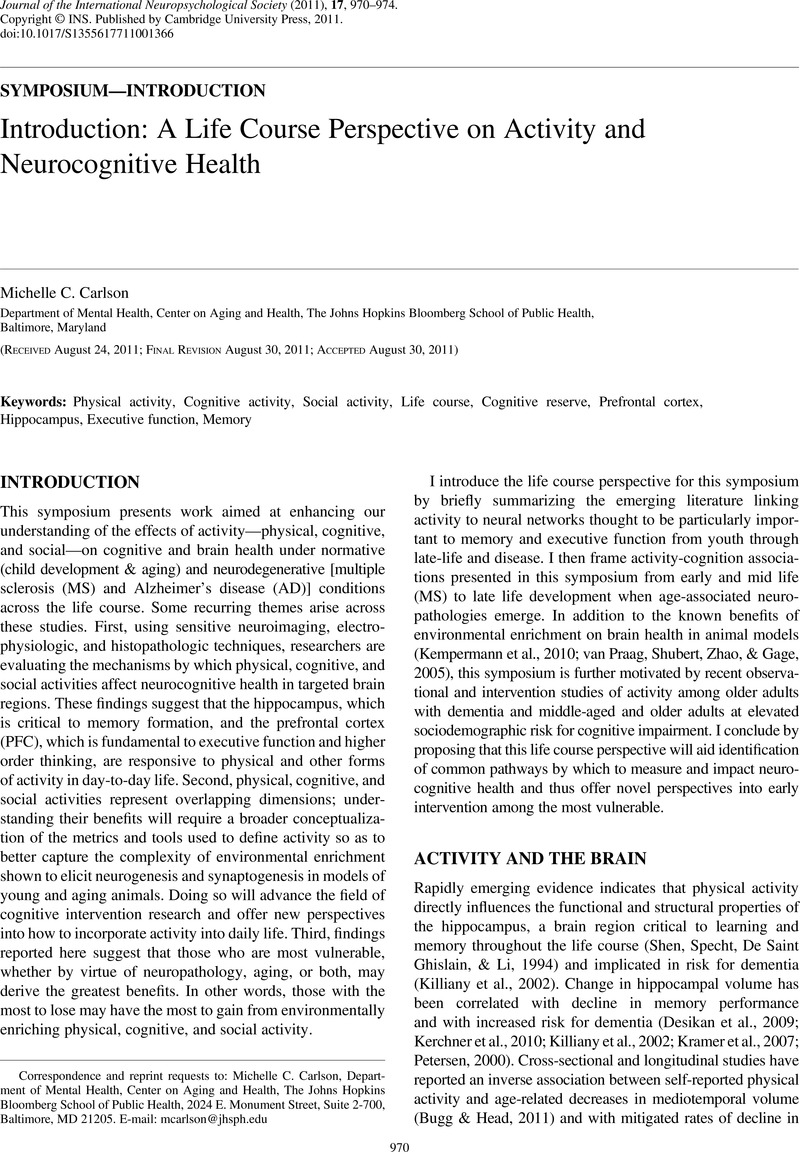Crossref Citations
This article has been cited by the following publications. This list is generated based on data provided by Crossref.
Randolph, Jennifer S.
and
Randolph, John J.
2013.
Positive Neuropsychology.
p.
25.
Trahan, Maranda A.
Kuo, Julie
Carlson, Michelle C.
and
Gitlin, Laura N.
2014.
A Systematic Review of Strategies to Foster Activity Engagement in Persons With Dementia.
Health Education & Behavior,
Vol. 41,
Issue. 1_suppl,
p.
70S.
Varma, Vijay R.
Tang, Xiaoying
and
Carlson, Michelle C.
2016.
Hippocampal sub‐regional shape and physical activity in older adults.
Hippocampus,
Vol. 26,
Issue. 8,
p.
1051.
Chan, Thomas
Parisi, Jeanine M
Moored, Kyle D
Carlson, Michelle C
and
Gutchess, Angela
2019.
Variety of Enriching Early-Life Activities Linked to Late-Life Cognitive Functioning in Urban Community-Dwelling African Americans.
The Journals of Gerontology: Series B,
Vol. 74,
Issue. 8,
p.
1345.
Armstrong, Nicole M
Tom, Sarah E
Harrati, Amal
Casaletto, Kaitlin
Pa, Judy
Arce Rentería, Miguel
Gu, Yian
Rajan, Kumar B
Schupf, Nicole
Fieo, Robert
Weuve, Jennifer
Simonsick, Eleanor M
Manly, Jennifer J
Stern, Yaakov
Zahodne, Laura B
and
Meeks, Suzanne
2022.
Longitudinal Relationship of Leisure Activity Engagement With Cognitive Performance Among Non-Demented, Community-Dwelling Older Adults.
The Gerontologist,
Vol. 62,
Issue. 3,
p.
352.
Crane, Breanna M
Moored, Kyle D
Rosso, Andrea L
Carlson, Michelle C
and
Lipsitz, Lewis A
2023.
Using GPS Technologies to Examine Community Mobility in Older Adults.
The Journals of Gerontology: Series A,
Vol. 78,
Issue. 5,
p.
811.
Wenzel, Karen Carnicello
Van Puymbroeck, Marieke
Gagnon, Ryan
Lewis, Stephen
McGuire, Francis
and
Vidotto, Julie
2024.
The Attributes and Characteristics of Leisure Activity Engagement that Foster Cognition in Aging: A Scoping Review.
Journal of Cognitive Enhancement,
Vol. 8,
Issue. 1-2,
p.
118.



